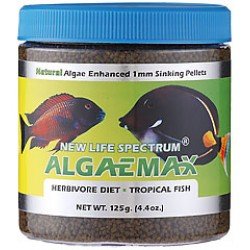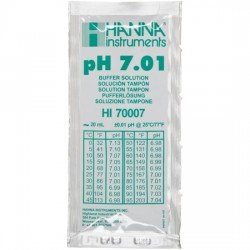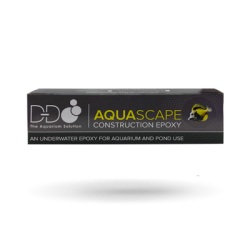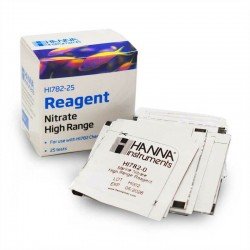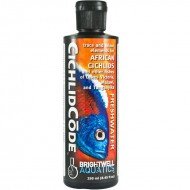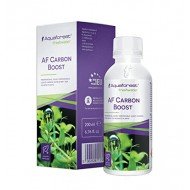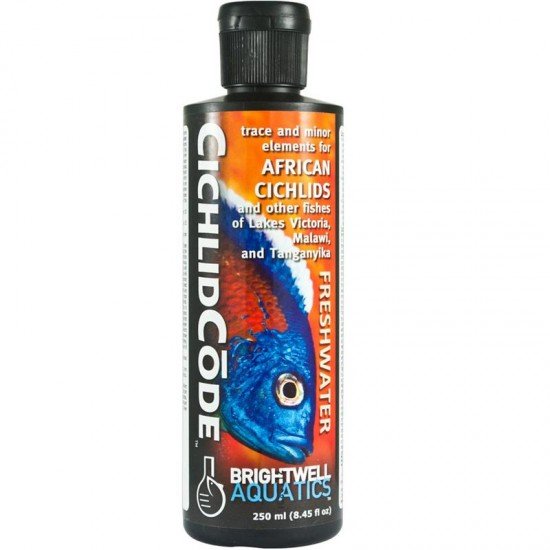
CichlidCode - trace & minor elements for african cichlids (250ml)
11.90€
9.84€
- Stock: Piegāde līdz 7 darba dienām
- Model: CDC250



Trace & Minor Elements for African Cichlids & Fishes of Lakes Victoria, Malawi, & Tanganyika
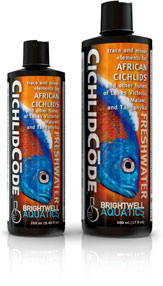
Overview
- Unique complex that provides trace and minor elements in ratios found to be beneficial to
cichlids and other fishes endemic to Lakes Victoria, Malawi, and Tanganyika - Provides minor and trace elements utilized in importantneurological and metabolic
reactions, and which are incorporated into natural biopigments for coloration - Replaces minor and trace elements used by aquarium inhabitants, and which are lost
through chemical filtration (use of filtration media such as resins and activated carbon) - Composed of purified water and ultra-high purity materials
- Does not significantly increase GH or KH
- Formulated utilizing extensive research on the chemistry of Lakes Victoria, Malawi, and
Tanganyika, and cichlid trace and minor element requirements
Sizes
125ml | 250ml |
Technical Background
The role that trace and minor elements play with cichlids and other fishes is related to neurological and metabolic processes (in which these elements play critical roles), as well as overall coloration (trace and minor elements are often at the core of pigments known to enhance coloration); they can even impact mood and lessen aggression, and are often found to have a calming affect on cichlids known to display unwanted aggression. Note that this product is not meant to modify behavior, however it may have this impact on certain fishes. This scenario is typically welcomed by the cichlid-keeper. Dosing a trace and minor supplement with every water change performed is an effective method of delivering these substances for maximum benefit.
The role that trace and minor elements play with cichlids and other fishes is related to neurological and metabolic processes (in which these elements play critical roles), as well as overall coloration (trace and minor elements are often at the core of pigments known to enhance coloration); they can even impact mood and lessen aggression, and are often found to have a calming affect on cichlids known to display unwanted aggression. Note that this product is not meant to modify behavior, however it may have this impact on certain fishes. This scenario is typically welcomed by the cichlid-keeper. Dosing a trace and minor supplement with every water change performed is an effective method of delivering these substances for maximum benefit.
The majority of East African cichlid species maintained by aquarium hobbyists have their origins in three lakes: Victoria, Malawi, and Tanganyika. Lake Victoria lies within a large but relatively shallow tectonic basin; it exhibits lower conductivity, carbonate hardness, and pH as compared to Lakes Malawi and Tanganyika, likely a result of the low-salinity runoff that is the lake’s main source of water input. Lake Malawi lies within a rift, and exhibits higher conductivity, carbonate hardness, and pH than L. Victoria, but much less than those levels of L. Tanganyika; as with L. Victoria, much of the water input to L. Malawi is in the form of low-salinity runoff. It may be surprising to learn that the water chemistry of Lakes Malawi and Victoria bear a closer resemblance to one another than do Lakes Malawi and Tanganyika. Lake Tanganyika also lies within a rift valley, however appears to receive much of its’ water from saline springs and runoff from carbonate-rich lava deposits, and has the highest average conductivity, carbonate hardness, and pH of the three lakes. Wild-caught cichlids originating from these lakes may be gradually acclimated to conditions present in one of the lakes to which they are not endemic, though avid “cichlidophiles” often attempt to re-create water parameters as much as possible regardless of whether their fish are wild-caught or captive-raised.
Instructions and Guidelines
Shake product well before using.
Community East African Cichlid Aquaria: Add ½ ml (~10 drops) of product per 25 US-gallons of aquarium water every other day. When used in this fashion, 250 ml treats up to 2,500 US-gallons (9,464 L).
Shake product well before using.
Community East African Cichlid Aquaria: Add ½ ml (~10 drops) of product per 25 US-gallons of aquarium water every other day. When used in this fashion, 250 ml treats up to 2,500 US-gallons (9,464 L).
Biotope Aquaria: As noted opposite, the water chemistry of Lakes Victoria, Malawi, and Tanganyika differ markedly. It is therefore sensible to use different dosages of this product for biotope aquaria in which cichlids endemic to only one of the three lakes are hous

